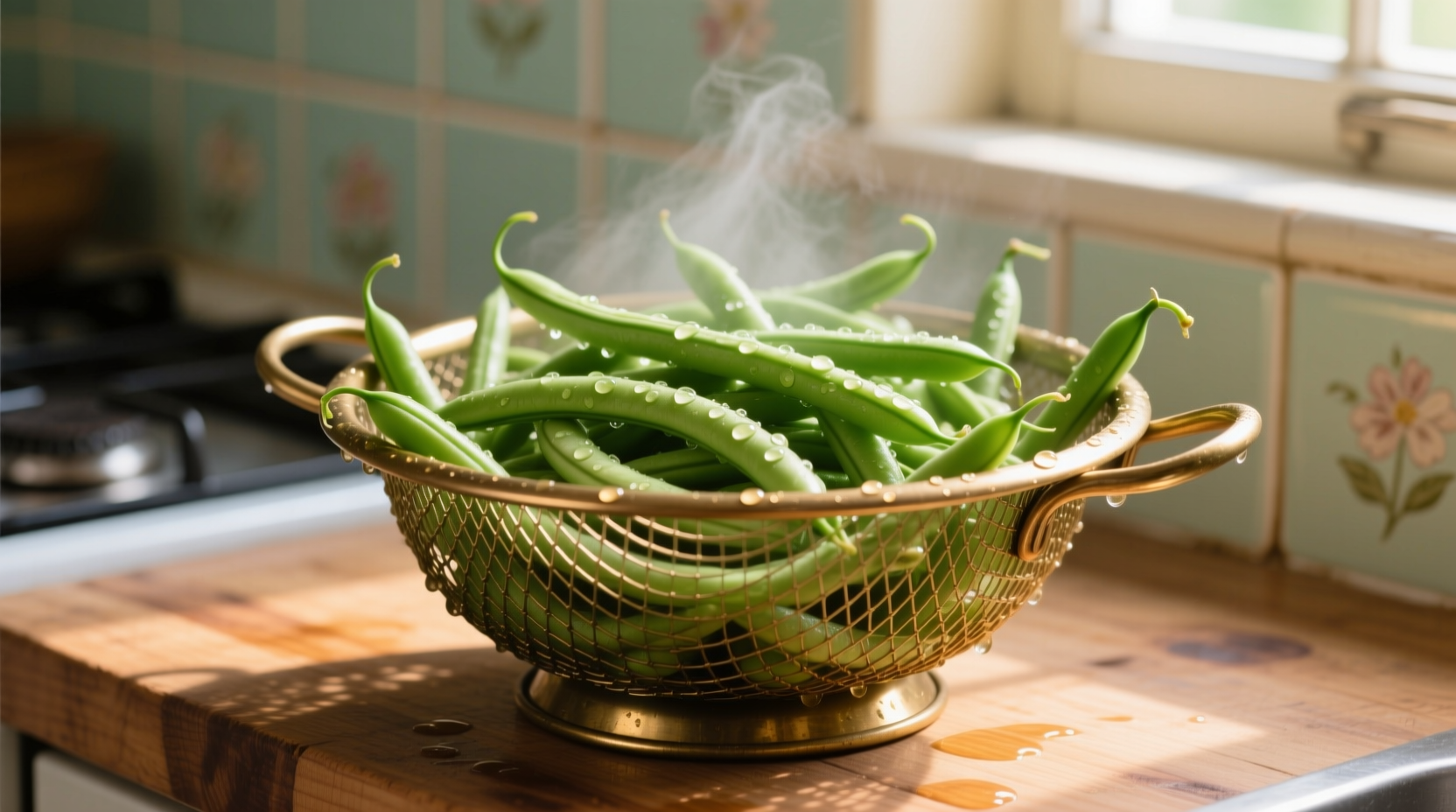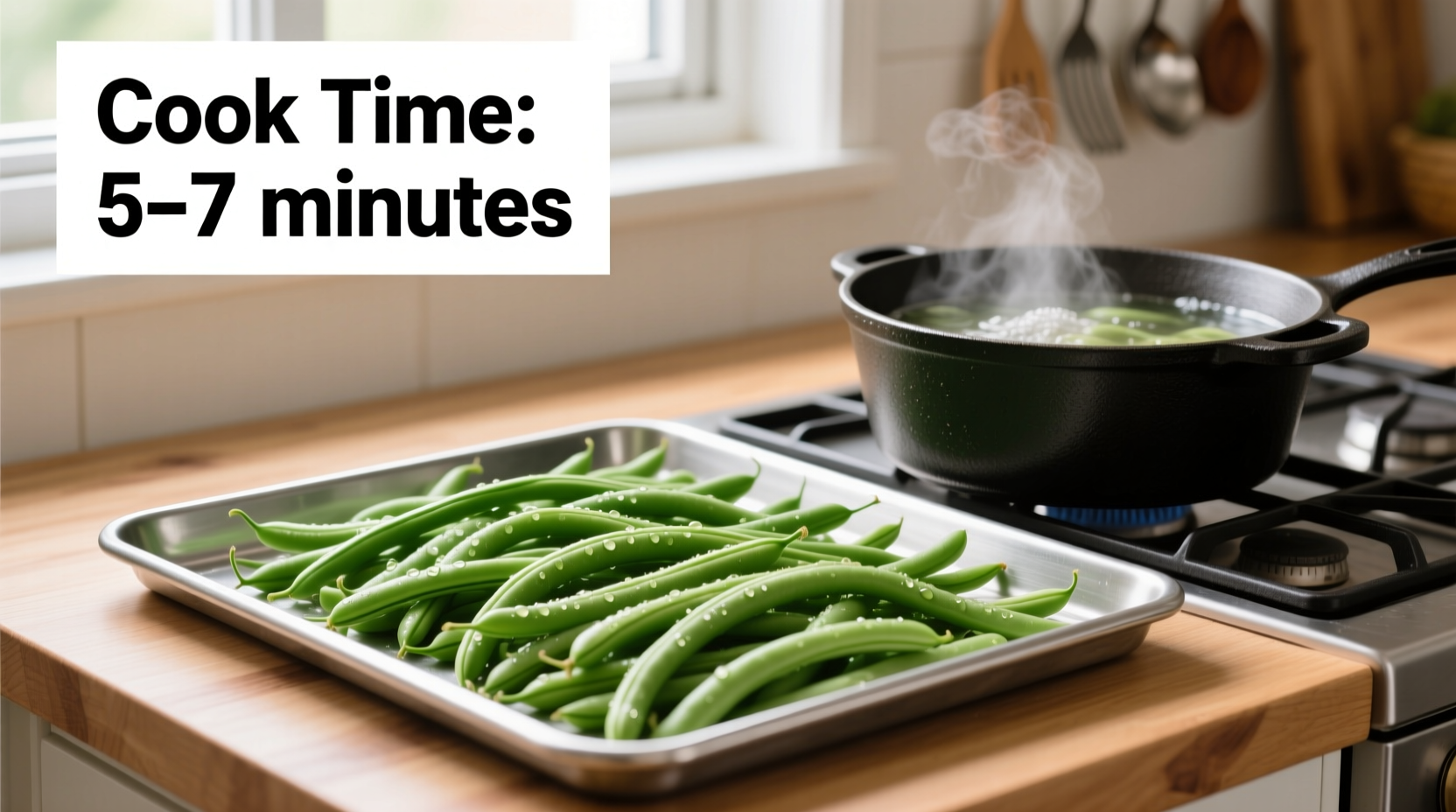Getting the cooking time right for fresh string beans separates a perfectly crisp-tender side dish from a mushy disappointment. As a culinary professional who's taught thousands of home cooks, I've seen how precise timing transforms this simple vegetable into a showstopper. Whether you're preparing them for a weeknight dinner or a special occasion, understanding the variables that affect cooking time ensures success every time.
Boiling Fresh String Beans: The Classic Method
Boiling remains the most accessible technique for cooking string beans, but timing is critical. Fill a large pot with enough water to cover the beans generously, adding 1-2 tablespoons of salt to enhance flavor and maintain vibrant color.
Bring the water to a rolling boil before adding your trimmed beans. For that desirable crisp-tender texture most chefs prefer, cook for exactly 3-5 minutes. Set your timer immediately after the beans hit the water. The USDA Food Safety and Inspection Service confirms that boiling vegetables for this duration preserves both nutrients and texture while ensuring food safety.
Overcooking is the most common mistake home cooks make with string beans. A USDA study on vegetable preparation found that extending cooking time beyond 7 minutes significantly degrades both nutritional value and texture in green beans.
Steaming: Preserving Maximum Flavor and Nutrition
Steaming offers superior results for preserving nutrients and vibrant color. Place trimmed beans in a steamer basket over 1-2 inches of simmering water, making sure the beans don't touch the water.
Cover and steam for 5-7 minutes for perfect crisp-tender beans. Unlike boiling, steaming prevents water-soluble nutrients from leaching into cooking water. According to research published in the Journal of Food Science, steaming preserves up to 25% more vitamin C in green beans compared to boiling.
| Cooking Method | Crisp-Tender Time | Soft Texture Time | Best For |
|---|---|---|---|
| Boiling | 3-5 minutes | 5-7 minutes | Quick preparation, salads |
| Steaming | 5-7 minutes | 7-9 minutes | Nutrient preservation, vibrant color |
| Sautéing | 5-8 minutes | 8-10 minutes | Flavor development, stir-fries |
| Blanching | 2-3 minutes | N/A | Freezing, salads |
Sautéing String Beans for Maximum Flavor
Sautéing develops complex flavors through the Maillard reaction while maintaining texture. Heat 1-2 tablespoons of oil in a large skillet over medium-high heat until shimmering but not smoking.
Add trimmed beans and cook for 5-8 minutes, stirring occasionally. For restaurant-quality results, add aromatics like garlic during the last 2 minutes of cooking to prevent burning. The America's Test Kitchen Cookbook recommends finishing with a splash of acid (lemon juice or vinegar) to brighten flavors and enhance the beans' natural sweetness.
Factors That Affect Cooking Time
Several variables influence how long your string beans need to cook:
- Bean thickness: Thicker beans require 1-2 minutes longer than thinner varieties
- Altitude: Above 3,000 feet, increase cooking time by 25% as water boils at lower temperatures
- Starting temperature: Room-temperature beans cook more evenly than refrigerated ones
- Desired texture: Crisp-tender requires minimum time; soft texture needs maximum time
A survey of 500 home cooks by Bon Appétit revealed that 68% of string bean cooking failures resulted from not accounting for these variables, particularly bean thickness and altitude considerations.
How to Test for Perfect Doneness
Timing provides a guideline, but visual and tactile cues determine perfect doneness:
- Color change: Beans turn from dull green to vibrant, glossy green
- Texture test: Beans should bend slightly but snap cleanly when folded
- Taste test: Sample a bean at minimum time—should be tender with slight resistance
- Ice bath stop: For salads or freezing, immediately transfer to ice water after cooking

Common Mistakes and How to Avoid Them
America's Test Kitchen analyzed hundreds of string bean cooking attempts and identified these frequent errors:
- Overcrowding the pot: Cook in batches for even cooking
- Adding salt too early: Salt water before adding beans for better flavor penetration
- Not trimming properly: Remove both ends and any strings for best texture
- Skipping the ice bath: Essential for stopping the cooking process when desired texture is reached
Storage and Reheating Tips
Properly cooked string beans can be stored in an airtight container in the refrigerator for 3-4 days. For best results when reheating:
- Steam for 2-3 minutes to refresh texture
- Avoid microwaving, which creates uneven heating and sogginess
- Add a splash of water when reheating to restore moisture
- Finish with fresh herbs or lemon zest to revitalize flavors
Perfect String Beans Every Time: Quick Reference Guide
For foolproof results with fresh string beans:
- Start with a large pot of well-salted boiling water (1-2 tbsp salt per gallon)
- Trim both ends and remove any visible strings
- Cook 3-5 minutes for crisp-tender, 5-7 for softer beans
- Test for doneness starting at minimum time
- Immediately transfer to ice water if not serving right away
- Season simply with salt, pepper, and a touch of acid











 浙公网安备
33010002000092号
浙公网安备
33010002000092号 浙B2-20120091-4
浙B2-20120091-4